Mapping the Territory Inside
We’re all travelers. Every day, we traverse our interior landscapes whether or not our bodies cover new terrain or the same familiar routines. The memoirist’s gift is the ability to note that movement and draw us into the moment with them. All particularly attuned the nuances of their personal journeys, these featured memoirs transport, whether the transit’s between geographic destinations, societal expectations, acts of artistic creation, or intercultural and interpersonal relations.
Nevada Days

Bernardo Atxaga
Margaret Jull Costa, translator
Graywolf Press
Softcover $16.00 (352pp)
978-1-55597-810-5
Buy: Local Bookstore (Bookshop)
Bernardo Atxaga’s Nevada Days novelizes the author’s writer’s residency in Reno, Nevada. In it, he relocates from Spain with his wife and two daughters for the spot, working against the backdrop of a United States at war—though tired of war and its turmoil. As Atxaga participates in local culture, the mythos of the American West, and presidential politics, his account navigates the territory between fact and fiction.
Imagination and dreams permeate this memoir, and Atxaga flags these transitions in passages labeled “according to the version,” “dream,” etc. Subtle yet intentional, Atxaga’s gesture signals caution. Nonetheless, it’s all too easy to slip into his world and trust it as authoritative and absolute.
But Nevada Days plays with a fundamental unknowability. There’s a tension between the acknowledgement that “No one lingers in the memory in all his or her complex biographical detail, and there are very few who become emblematic figures” and the narrative that Atxaga crafts, full as it is of big personalities, grand gestures, majestic landscapes, and looming threats. Even though this seems to be part of Atxaga’s warning, it’s also a human weakness: a propensity to fall into a story despite all warnings that we’re being led.
Maneuvering from daily life in and around Reno through fragments of imagination and dreams, Nevada Days explores the often unnavigable space between experience and meaning. In a memoir that could be read as a straight, factual account, Atxaga is persistently interested in the personal narrative’s vulnerability and the disruptions any story undergoes on its journey to become known: “As Daniel Sada might have said, reality was the desert, and representations of reality the stage set.”
LETITIA MONTGOMERY-RODGERS (June 27, 2018)
Old in Art School
A Memoir of Starting Over
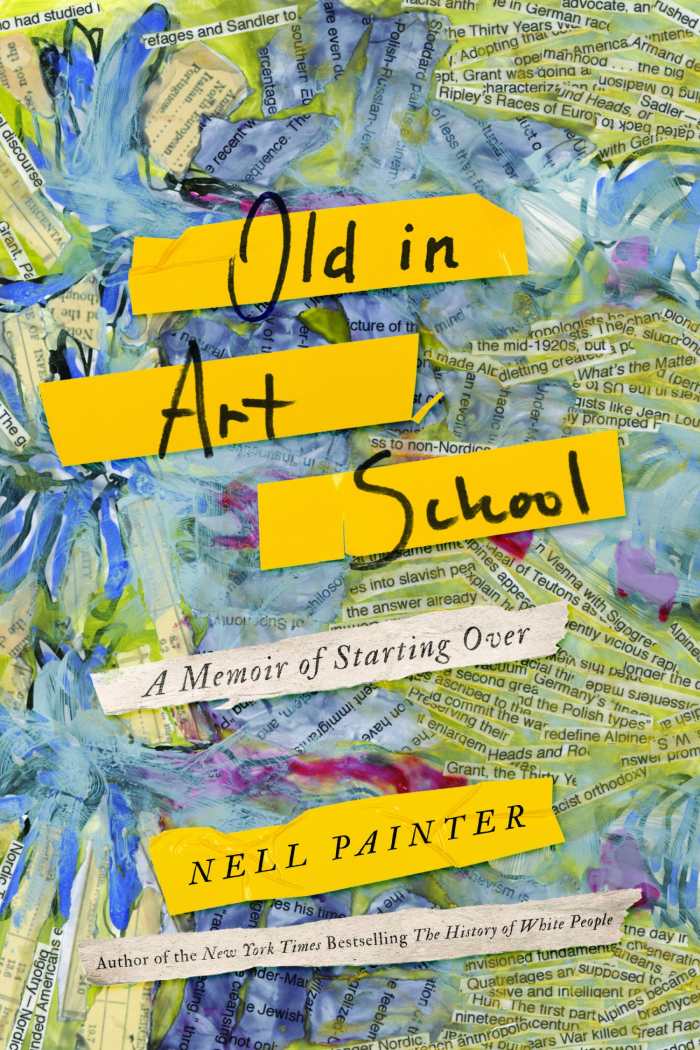
Nell Painter
Counterpoint
Hardcover $26.00 (352pp)
978-1-64009-061-3
After a successful career as an academic and historian, Nell Painter decided to go to art school. For Painter, art equates to pleasure, and the pleasure is visceral—it frees and connects mind and body in a way she couldn’t find elsewhere. However, because her decision coincided with retirement, there’s a wholly surprising element to the arrangement: “Now what I took as me seemed almost inconsequential as my essence shriveled to my age. This was something new.”
In Old in Art School, Painter makes a prism of her experience, breaking the invisible monolith of art into a distinct, personal refraction. She adeptly captures the complexity of her transition from historian to artist, folding in a survey of twentieth- to twenty-first-century art history, the practical and identity challenges of creative work, and the tension that exists between the artist, art-making, and the marketplace.
Painter is a personality par excellence; forthright, erudite, and perfectly profane, her voice enthralls. She bestows titled affiliations on various people in her life from “Dear Husband Glenn” to “Teacher Hanneline,” describes the world in glorious colors of paint (Branch Brook Park is a “late-summer chromium oxide green, later, burnt-umber bare”), and addresses the powerful specter of abstraction, from “An Artist” to “The Art World.” And she achieves all this while citing historical sources, invoking Beyoncé, delivering insightful critique, and finding thrilling new configurations for curse words.
Filled with immense insight and presence, Painter’s memoir confronts a variety of issues and what it means to shoulder those burdens in the pursuit of art. Essential reading, Old in Art School resists simplification. It insists on abundance with Derrida’s certainty that “there’s no beyond the frame; everything, whether you think it belongs in the picture or not, brings meaning to the image.”
LETITIA MONTGOMERY-RODGERS (June 27, 2018)
For Single Mothers Working as Train Conductors

Laura Esther Wolfson
University of Iowa Press
Softcover $19.95 (144pp)
978-1-60938-581-1
Buy: Local Bookstore (Bookshop)
Laura Wolfson worked, traveled, and eventually married in the Soviet Union toward the end of the Cold War. Despite being fluent in Russian, she struggled to understand her Russian spouse’s insistence that having children would require twenty-four-hour childcare. Eventually, this statement is revealed as a reference to the childcare provided by the Soviet state for single mothers working as train conductors. But her spouse’s mother wasn’t one. After their childless marriage and divorce, his statement lingers, a translation without a context and the first of many instances in Wolfson’s For Single Mothers Working as Train Conductors where her desire for language to be at the root of everything and the limitations of that same vehicle are revealed.
Wielding a diarist’s tone of complete, poignant honesty, there’s an undeniable gravitas in Wolfson’s story. She makes a formidable offering of her life, traversing two marriages, sickness and health, multiple countries, several languages, and a career in translation. Her foreign language skills give her access to experiences that are and aren’t her own, and the results of this arrangement play out in interesting ways across the memoir.
The memoir’s chronology is organically rough and balances time’s forward march with retrospective meaning-making, but Wolfson’s greatest skill is as a stylist. Throughout, her prose is a constant delight; melancholic, it dances between Proustian perambulations and stark, terse phrases with ease. The transit between these polarities is circuitous and unhurried, with remarkable turns of phrase scattered high and low.
At one point, Wolfson surmises, “Writing arises from loss; it aims to fashion something to fill the charred void that is one of the late phases of suffering, to erect on a parched plot of pain an edifice of meaning, or of beauty.” A disconnect among connections, For Single Mothers Working as Train Conductors fashions beauty from all the singular losses of Wolfson’s many parts.
LETITIA MONTGOMERY-RODGERS (June 27, 2018)
I Ran into Some Trouble
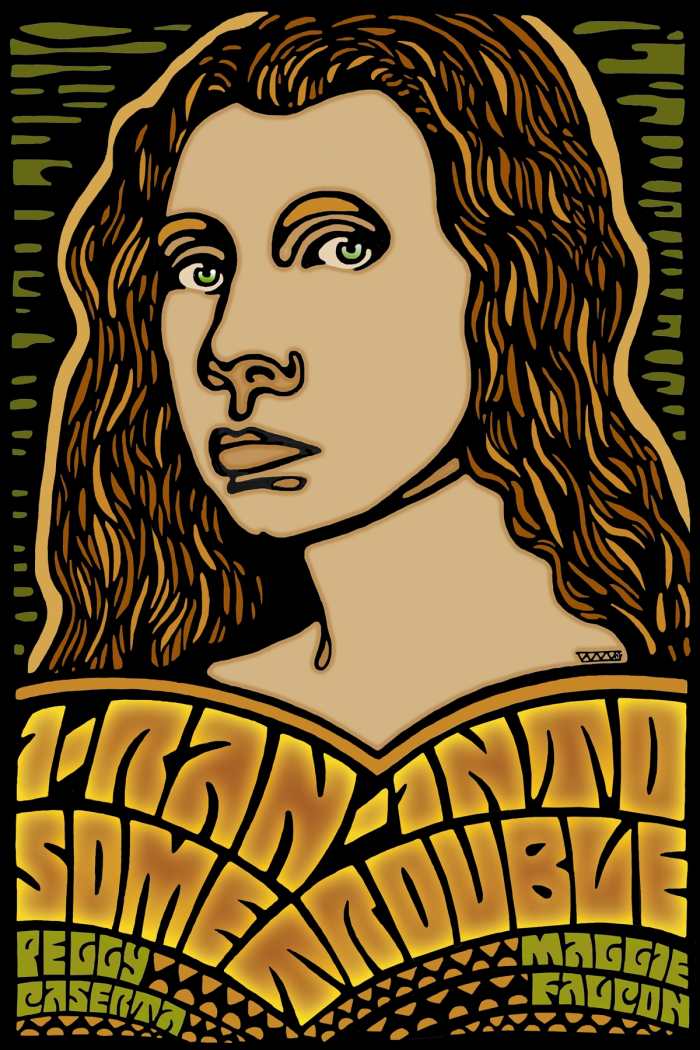
Peggy Caserta
Maggie Falcon
Wyatt-MacKenzie Publishing
Hardcover $29.95 (286pp)
978-1-942545-82-8
Buy: Local Bookstore (Bookshop)
Best known for the influence of her store, Mnasidika, and her association with Janis Joplin, Peggy Caserta has the devil’s own luck. Relentless and relentlessly unafraid to use all the advantages at her disposal, her story is a wild ride. Caserta’s I Ran Into Some Trouble, written with Maggie Falcon, bypasses the scandal sheets to explain Caserta’s perspective on a life thoroughly lived.
Caserta focuses on her journey from being a small-town Louisiana girl to becoming a fashion, culture, and tabloid sensation to finding her place as a quiet retiree and parental caretaker. Careful to centralize her own life, she steers clear of overreliance on her celebrity connections. She digs into the elements of her life that happened outside of the public view, as she hustled to make something of herself and keep that sense of self intact through grief, loss, abuse, and addiction.
While Caserta recognizes her advantages, especially her parents and their ever-present emotional and financial support, it’s also easy to see how her wealth and her whiteness often insulated her from the worst consequences of her behavior. Her meteoric rise as a fashion powerhouse and cultural influencer is shadowed by debauchery, troubled relationships, financial instability, health problems, and addiction. Yet, unlike some of her peers, Caserta survived, not unscathed, but relatively intact. Why is a question even she can’t fully answer.
In many ways, I Ran Into Some Trouble is Caserta’s reclamation of her own story, a second chance after the infamous Going Down with Janis. While there’s some regret for the decisions she abdicated during the worst of her addiction, this memoir isn’t about apologies. Rather, Caserta focuses on telling her story her way and owning it. The experience is less salacious and infinitely more astonishing in the scope of what she did, what was done to her, and what she got away with.
LETITIA MONTGOMERY-RODGERS (June 27, 2018)
My Year of Dirt and Water
Journal of a Zen Monk’s Wife in Japan

Tracy Franz
Stone Bridge Press
Softcover $16.95 (308pp)
978-1-61172-042-6
Buy: Local Bookstore (Bookshop)
One of the first things Tracy Franz learns as a yakimono deshi, an apprentice of traditional Japanese pottery, is that “it is the nothingness in the middle that determines the true size of the vessel.” Her memoir, My Year of Dirt and Water, expands this tenet over the calendar year Franz and her spouse spend separated in Japan when he enters a Zen monastery to train as a priest.
Although Franz had lived in Japan roughly four years prior to her spouse, Koun, entering the monastery, a year apart in this familiar foreign country is an entirely different proposition. Without Koun, Franz’s attention is drawn to the space in her life and the ways that space is variously empty or altered by routine, obligation, relationship, practice, and memory.
Throughout the memoir, Franz matches restraint with reflexiveness, crafting a narrative equally filled with the luminous particular and the telling omission. Death and impermanence—Zen’s secret heart—are very present. As the year unfolds, absence becomes a type of expansiveness as Franz identifies and learns the texture and shape of her loneliness. While being out of context becomes a pleasure for her, it also draws her attention to the subtle differences between refusal, acceptance, and letting go.
As a traveler, Franz’s reconciliation between her homes in the US and Japan plays an important role in her self-awareness; she does not objectify or tokenize either place. She always homes her experience in the personal, and as such, “the familiar becomes foreign; the foreign becomes familiar.”
My Year of Dirt and Water incorporates Zen, pottery, living abroad, and Franz’s past and present with skillful delicacy, connecting these elements as if by analogy. Traversing territory defined by lack, My Year of Dirt and Water offers the singular pleasure of a story that “obscures but is not obscured.”
LETITIA MONTGOMERY-RODGERS (June 27, 2018)
Refuge
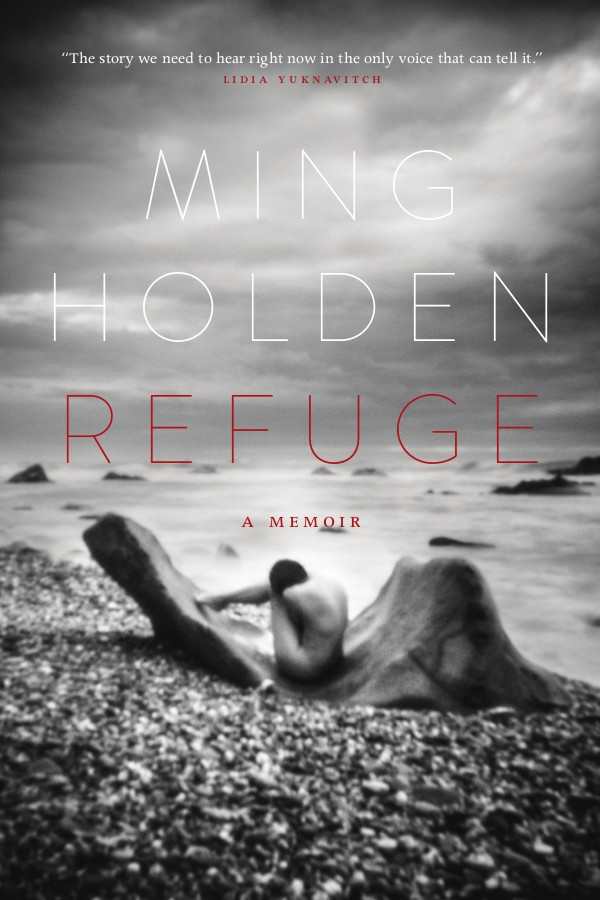
Ming Holden
Kore Press
Softcover $20.95 (246pp)
978-1-888553-95-6
“By all accounts, moving from place to place helps one to locate a space, a home inside oneself,” Ming Holden claims. Whether or not, or to what degree, she believes this is a central motif in her memoir, Refuge. Twining an arc of personal growth in her twenties with a larger story of displacement, Holden recounts her work with refugee populations around the world.
The book is a memoir in ten sections. Each section is organized around a different geographic location and the idea of “refuge”: where people find it, how they make it, and where it takes them. At times, this means that Holden’s work with refugees is centralized. At others, it’s her own interior work that’s brought to bear.
Within each focus, Holden doesn’t shy away from the truth. Her interest in revelation spares no one. There are moments of transcendence in the collection, but not at the expense of recognizing the world’s ugliness, including the narrator’s own.
Structurally, these sections work like long-form essays that move with freedom back and forth between the experiential and the theoretical, exposition and lyrics. Some passages are gut-wrenchingly memorable; others treat the audience as an artifact rather than the purpose. Often, the work is radically moving because of this, but what presents as a strength in many sections is interruptive and distancing in others.
Holden writes from a stated place of advocacy and allegiance with refugees—not speaking for them, but speaking of them. She acknowledges the problematic nature of this gesture, good intentions notwithstanding. Nonetheless, her persistent concern with the presence of loss, the lives of ordinary people, and place as a necessary anchor in the world creates a sympathy between the author and her subjects, amplifying the sense of violence and sanctuary that human beings can find in each other.
LETITIA MONTGOMERY-RODGERS (June 27, 2018)
Someone Has Led This Child to Believe
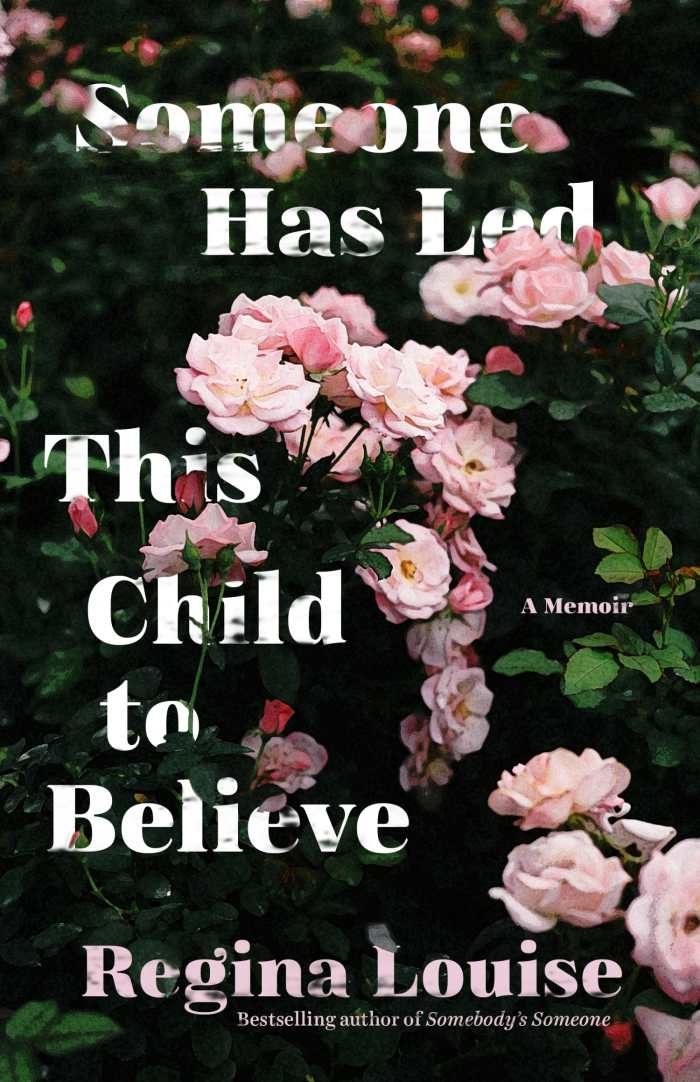
Regina Louise
Agate Bolden
Softcover $16.00 (248pp)
978-1-57284-222-9
Buy: Local Bookstore (Bookshop)
Regina Louise was a child of the system. She spent time in every way station it provides: placement with extended family, foster care, a mental health facility, and a group home. The only experience child welfare didn’t provide was adoption, despite a willing adoptive parent and mutual rapport. Her memoir, Someone Has Led This Child to Believe, traces the destructive deferment of a child’s needs and the rapprochement offered by a defiant survival into adulthood.
Louise’s first experience with family was a slow process of learning she was unwanted. Early on, Louise intuited adults were the enemy because, all too often, they expected children to answer with adult insight, as if their lack of parents was an earned autonomy orchestrated by the children themselves. This was not true, and inevitably, the disconnect between perception and reality led to blame, hostility, aggression, and often, abuse and violence.
Rather than provide safety and succor to society’s most vulnerable, the child welfare system experienced by Louise preyed on the children in its care. Blind to Louise’s lack of family and community ties, a hostile social worker raged about Louise’s perceived rejection of blackness, making her a personal project with overtones of vendetta. Surrounded by messages of worthlessness, Louise’s survival strategy became equal parts loyalty to herself and patrolling of herself to pass as normal, as deserving, as enough.
There’s pain and beauty in Louise’s vulnerability and her willingness to evict personal experience from the singular realm of self and take it into the world. As she says, “This is the task of anyone who carries the burden of her own unworthiness: … to wipe someone else’s fatalistic narrative of what our lives will be from our consciousness, hand it back to them and say: ‘I believe this belongs to you.’”
LETITIA MONTGOMERY-RODGERS (June 27, 2018)
Somewhere West of Lonely
My Life in Pictures
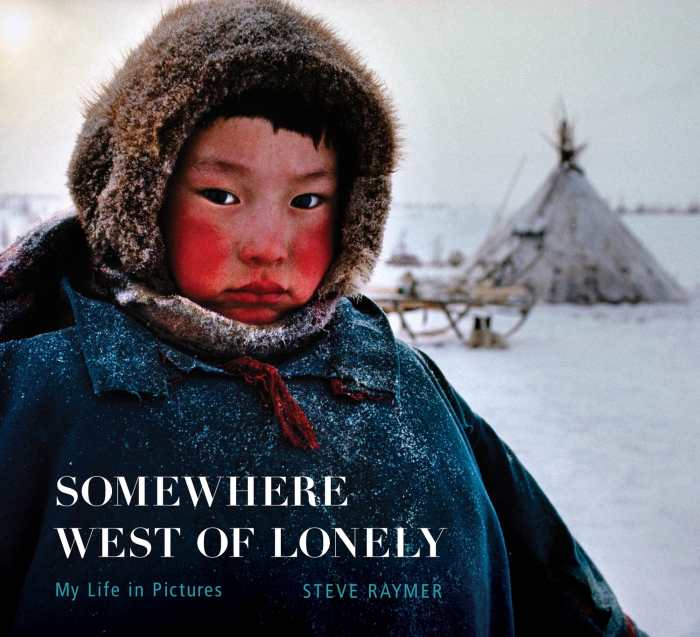
Steve Raymer
Indiana University Press
Hardcover $40.00 (180pp)
978-0-253-03360-4
Buy: Local Bookstore (Bookshop)
In Somewhere West of Lonely, Steve Raymer reports on a world most of us will never see: the varied, complicated, and quixotic terrain of his own life as a National Geographic photojournalist.
Beginning in the mid-1970s and ending in the 1990s, Raymer’s relationship with National Geographic twinned the dual imperatives of the adventure tale and a personal perspective to inform the lens. Because of Raymer’s unique, privileged position, his reflections also carry substantial historical and cultural baggage, for better and for worse.
In a retrospective spanning five decades, Raymer pairs the most significant images from five career periods with a insider’s view of photojournalism during its heyday. Much that’s been codified since Raymer’s time in the field began as an intimate cadre’s personal experience, as evidenced in the emphasis on larger-than-life personalities—in front of and behind the lens. But Raymer also brings to light the implied requirements for exogenous survival training, issues with PTSD, and minimal support networks that were—and continue to be—the shadow side to an increasingly decentralized, privatized public service job.
Somewhere West of Lonely is occasionally tone deaf in its explication of the photojournalist’s role. Raymer’s career took place during photojournalism’s golden age, a period rife with colonialism’s vestiges. While Raymer addresses the socio-cultural and ethical implications of the Western gaze, too often, a generalized critique is paired with a personal exemption, brushing aside uncomfortable implications about his own twentieth-century lens.
Raymer’s career is equal parts genesis, zenith, and finale in photojournalism’s apex. In looking back, he pronounces his photographs more than just images. They’re events that achieved importance because they were documented and disseminated for public consumption. The photojournalist captures and makes relevant the lives of ordinary people, becoming a “voice for the voiceless.” Somewhere West of Lonely strives to interpolate that perspective into the present through anecdotes, analysis, and personal axioms.
LETITIA MONTGOMERY-RODGERS (June 27, 2018)
Letitia Montgomery-Rodgers

